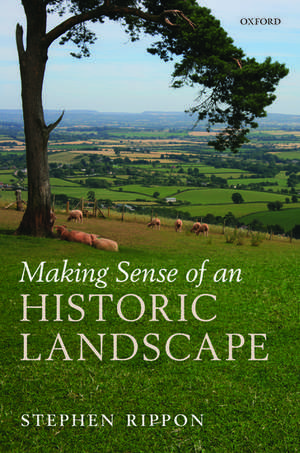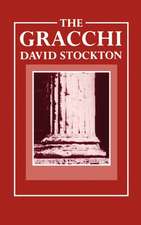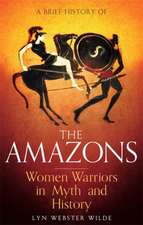Making Sense of an Historic Landscape
Autor Stephen Ripponen Limba Engleză Hardback – 11 iul 2012
Preț: 663.33 lei
Preț vechi: 947.15 lei
-30% Nou
Puncte Express: 995
Preț estimativ în valută:
126.97€ • 137.96$ • 106.72£
126.97€ • 137.96$ • 106.72£
Carte tipărită la comandă
Livrare economică 10-16 aprilie
Preluare comenzi: 021 569.72.76
Specificații
ISBN-13: 9780199533787
ISBN-10: 0199533784
Pagini: 416
Ilustrații: 100 in text illustrations and 8 pages of colour plates
Dimensiuni: 165 x 241 x 27 mm
Greutate: 0.88 kg
Editura: OUP OXFORD
Colecția OUP Oxford
Locul publicării:Oxford, United Kingdom
ISBN-10: 0199533784
Pagini: 416
Ilustrații: 100 in text illustrations and 8 pages of colour plates
Dimensiuni: 165 x 241 x 27 mm
Greutate: 0.88 kg
Editura: OUP OXFORD
Colecția OUP Oxford
Locul publicării:Oxford, United Kingdom
Recenzii
This book deals with the fascinating question of how cultural landscapes are formed over the long term, and why neighbouring regions can have quite different characteristics ... there is no doubt that this book will have lasting value as a starting point for work on this landscape region.
This book, then, is a landmark study - simultaneously an excellent exposition of the holistic approach, a fresh treatment of early medieval landscape history in the southwest (leaving aside Cornwall) and a demonstration of the contribution which this part of the world can make to our understanding of pattern and process in English early medieval landscape history as a whole. It well deserves an honoured place on any serious landscape historians bookshelf.
A particular value of this book and its new methods is in providing a temporal/geographic framework on which many aspects of historical research can continue to be fitted. This is an excellent and practical contribution to Historic Landscape studies and all the more worthy for being directed at the Blackdown Hills
the identification in this case study of the significance of long-lasting local cultures in forming the landscape makes an important contribution to a developing direction for research, and offers fertile ground for further work.
This book, then, is a landmark study - simultaneously an excellent exposition of the holistic approach, a fresh treatment of early medieval landscape history in the southwest (leaving aside Cornwall) and a demonstration of the contribution which this part of the world can make to our understanding of pattern and process in English early medieval landscape history as a whole. It well deserves an honoured place on any serious landscape historians bookshelf.
A particular value of this book and its new methods is in providing a temporal/geographic framework on which many aspects of historical research can continue to be fitted. This is an excellent and practical contribution to Historic Landscape studies and all the more worthy for being directed at the Blackdown Hills
the identification in this case study of the significance of long-lasting local cultures in forming the landscape makes an important contribution to a developing direction for research, and offers fertile ground for further work.
Notă biografică
Stephen Rippon is Professor of Landscape Archaeology at the University of Exeter.














